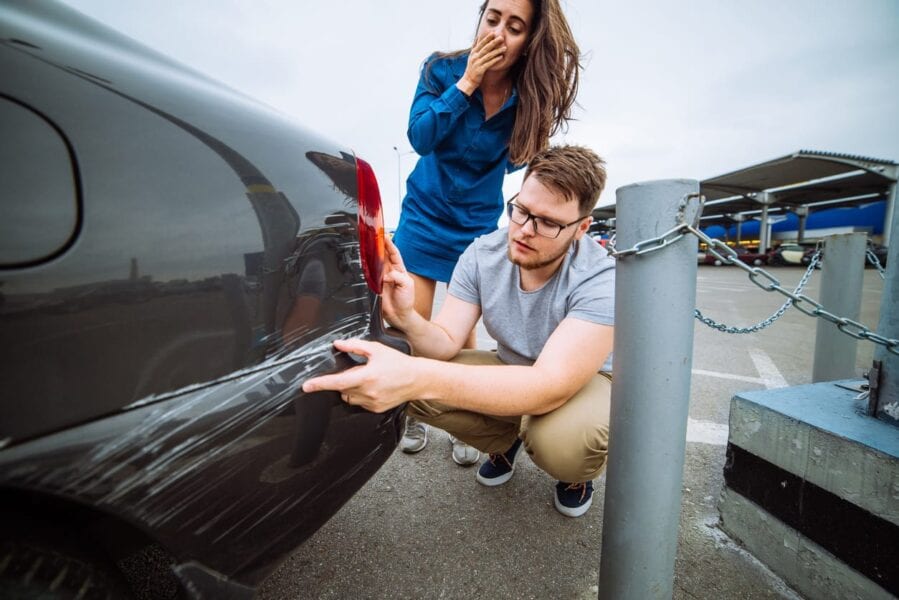
All you need to know about car retouching paints
Content
During trips, and even when the car is parked, the body of any car is exposed to many risks (friction, shock, bird droppings, etc.) that threaten the appearance and good condition of various types of paints for protection and decoration. Fortunately, there are various tinting paints for a car that hide or remove minor damage that can occur with a car’s precious paint.

These paints are suitable for all budgets and, in addition, improve the appearance of damage, in some cases, sealing the coating and protect the metal in order to avoid its oxidation.
Application of paint retouching for cars
The main areas of application for these products are covering small damages, such as chips or scratches on body parts, in which there is a certain defect in the material. Depending on the type of car touch-up paint, finish, durability, and level of protection, requirements vary, so you need to know the options available on the market to choose what works best for your purposes.
It should also be borne in mind that for surface damage that lacks a primer, it is not necessary to use these products, because paint or dirt can be removed by wiping the surface with a degreaser or polishing the affected area.
Finally, if the scratch only affects the top layer of varnish or paint (depending on the body finish) and is not very deep, the anomalies can be eliminated through the process of sanding and then polishing the damaged area.
The choice of paints for tinting a car
The market sells various products designed both for self-retouching of car paint, and for use in the professional field. Many products designed for a specific area are sold as miraculous solutions that can restore their original appearance with external damage.
However, this statement should be questioned if we understand that any body element consists of several layers of paint with different characteristics and different colors; we are unlikely to believe that there is any type of paint for tinting for a car that is able to restore all layers of paint on damage and get a shiny surface like from a conveyor belt.
So, custom car touch-up paints are a solution that hides damage, but if the goal is to get the best possible protection and finish, we may need to go to a shop and have it professionally repainted.
Types of Car Tinting Inks
Retouching paints for a car can be classified as follows:
- Retouches applied with a brush, pen, or similar device.
- Retouching paints used in aerosol packaging.
- Retouches designed for plastics.
Retouches applied with a brush, pen, or similar device
As mentioned above, this type of retouching paint for cars offers the buyer a quick and easy way to repair damage, at a minimal cost. Thus, the level of protection and quality is lower than what can be achieved with retouching done in the workshop using quick recovery processes (known as “ smart repair, spot repair, and etc.).
Within this group, the following options are highlighted:
- Retouching paint with a brush.
- Pen type retouching paint.
Retouching, using a brush, exists in two versions. They are very specific: original, produced by the car manufacturer or distributors, and from third-party manufacturers. In both cases, the use of this type of retouching ink provides a certain degree of protection and is a solution of greater strength than other systems such as pen.
Retouching brushes offered by the manufacturer or authorized distributor are available for each of the colors that are configured by ISBN for each car model. This ensures that the color is the same, which enhances the quality of the retouching appearance. In addition, to improve protection and simulate the original finish, it comes complete with other products, such as varnish or wax.
In the case of a brush, retouching sold by non-specialized manufacturers has colors, as a rule, more universal. Thus, retouching is less accurate and more visible to the naked eye.
All retouching inks of the “pen” type, which represent the most economical solution, are less durable and do not guarantee any protection, so their use is only recommended in emergency cases where there is no other option. On the other hand, they do not lead to restorations as reliable with original color as, for example, offered by brush-type touch-ups distributed by the manufacturer or specialized companies.
To apply these paints, you must do the following process:
- Clean any remaining paint.
- Clean and degrease the surface with a cleaner.
- Retouch damage.
Retouching paints used in aerosol packaging
This option of retouching damage improves results in comparison with retouching systems with a brush or pen, as it has an improved degree of finish, sealing and durability of retouching. However, this process is more expensive and time consuming, you need to have a paint code, but it does not require great technical skills.
Paint manufacturers sell spray paints of all kinds: enamels, varnishes, primers, etc., which allows for complete repair of damage. If the goal is to retouch a small area, you must follow these steps:
- Clean the damaged area to remove any rust, paint, etc.
- Grinding the surface with an abrasive, three-dimensional thin type of sponge using a sanding pad.
- Clean and degrease the surface.
- Protect border areas that will not be painted. The protection should always be located far enough from the scene of action so that the paint does not reach the edge of the tape that protects the elements. If suddenly this happened - grinding can help in the future.
- If the damage is large, and there are areas of bare metal, it is necessary to apply a primer spray to protect the surface.
- Apply colored enamel, as indicated by the manufacturer, if damage is received in the paint layer, which are under the varnish. It should be remembered that it is extremely important to observe the exposure time between the layers.
- Apply varnish in the aerosol form specified by the manufacturer. The varnish layer should not exceed the paint layer and in no case should it reach the edge of the tape, which protects the rest of the elements. When applying a layer of paint, it is necessary to make a slight rotational movement with your wrist so that the varnish lays evenly (shading technique).
- To reduce the visibility of the transition zone, you can apply the paint in a smaller layer, which will facilitate the process of subsequent polishing.
- After the part has completely dried, it is necessary to polish and carefully polish the lacquer transition zone for integration with the rest.
The same process can be obtained by combining aerosol paints with paints and varnishes for professional use or using an airbrush. In these cases, the quality of the repair increases significantly with regard to decoration, protection and durability. At the same time, it is necessary to work with plastic materials carefully, it is worth applying an adhesive layer to bare plastic to increase adhesion to the paint.
Paints, retouching, applied to uncoated plastics
This type of paint is a product specifically designed for plastic repair to improve adhesion to that substrate and mimic some types of finishes if these materials are uncoated. Among the products, spray paints are the most popular. Sold in a variety of colors (black or anthracite typically) and a variety of surface finishes (smooth or rough for a textured finish).
These paints, retouches for cars allow you to paint parts completely and are subject to direct application. The application process is as follows:
- If there is a scratch, it must be sanded with P-180, degrease the surface, apply a primer, and then, sealant, putty to smooth the surface. After drying, sanded, including the border zone to approximately P-360 grain.
- Clean and degrease again.
- Protection of adjacent areas that may be damaged, taking into account all safety precautions mentioned above.
- Spray paint.
It should also be noted that there are other products designed to improve the appearance of plastics or to correct anomalies. The most significant are the following:
- Plastic reducing agents in liquid format.
- Dyes for synthetic materials.
- Paints in aerosol packaging intended for painting instrument panels or plastic in the cabin.
Conclusion
There are several paint and retouch options for cars. The choice of one or another depends on the finish and durability that you want to achieve in the repair, although from a professional point of view, it is recommended to work with paint using a professional gun.


One comment
Costa
Hello, I had my car repainted in a different colour years ago, so I don’t have the colour code
Now I need to buy paint for a retouch but I dont have the colour code.
Which is the best way to choose the most similar colour?
Thank you!